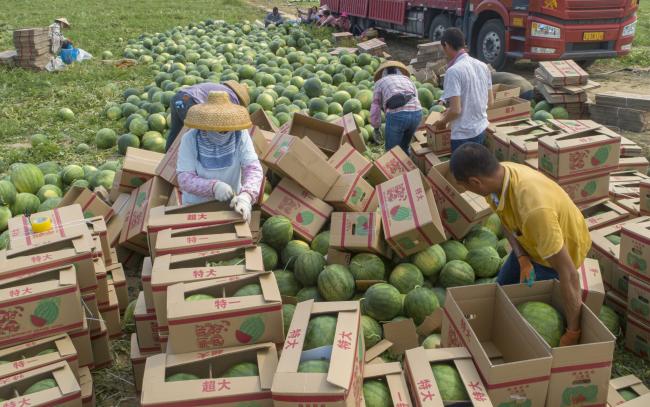Articles Menu

June 10, 2021
Emissions from food production, already considered one of the biggest contributors to climate change, have been underestimated for decades, potentially skewing the pledges that countries have made under the Paris climate agreement to cut their greenhouse gas emissions, according to new research.
In a study published this week in Environmental Research Letters, researchers found that the food system was responsible for as much as 40 percent of all greenhouse gas emissions from human activities.
“When you count it all up, across the food system, it’s enormous,” said Cynthia Rosenzweig, a researcher with Columbia University’s Earth Institute and the NASA Goddard Institute for Space Studies. “So it offers countries really enormous opportunities.”
Recent estimates put agriculture’s greenhouse gas emissions at about one-fifth of the global total, but that figure only includes emissions from on-farm activities, mostly raising crops and livestock. When the researchers looked at the entire food system—including the raising of crops and livestock, the conversion of land to agriculture, transportation, retail sales, food consumption and food waste—the total was significantly higher, between 20 and 40 percent, or about 16 billion metric tons of carbon dioxide.
The difference is crucial. As countries plan to meet greenhouse gas reduction targets, they submit detailed plans called Nationally Determined Contributions, based on emissions data they provide, to the United Nations Framework Convention on Climate Change (UNFCCC). But the agriculture-related emissions countries report don’t consistently encompass emissions from the entire spectrum of the food system, including deforestation, a major source of greenhouse gas emissions.
That means countries have even greater potential to cut greenhouse gas emissions from their food production systems and that those reductions will prove essential in meeting the goals of the Paris Agreement, the researchers said.
The researchers—a collaboration among several institutions, including the Food and Agriculture Organization of the United Nations, Columbia and New York University—found that three quarters of emissions from the food system came from on-farm activities, the food supply chain, including processing and transportation, and waste disposal. The other quarter came from converting natural ecosystems to agricultural land.
Overall, they found, land conversion and deforestation had gone down in both developed and developing countries, though it’s still dangerously high and the single biggest source of emissions in the food system.
Interestingly, though total emissions from the food system rose by 8 percent from 1990 to 2018, the time frame the researchers studied, emissions on a per capita basis went down. Per capita emissions in developed countries are nearly twice as high as in developing countries.
While the research team’s estimates track with other recent research, which puts food system emissions at about one-third of all man-made emissions, their focus was on providing country-by-country data, in part so that individual countries could improve the accuracy of their agriculture-related climate pledges.
The researchers also wanted to underscore that agricultural emissions data, which often gets reported to the UN in different categories, is instead reported across their food systems. For example, countries currently report agriculture-related emissions from deforestation under “land use” or on-farm energy use under “energy”.
“This typically leads to underestimates of food system emissions at the national level,” the researchers said, because conversion of forest to farmland can essentially be canceled out by carbon sinks in forest land under current UNFCCC accounting rules. Countries can also report their total national emissions without including any emissions from land-use change.
“By doing this with a food system approach, it’s a different accounting mechanism,” Rosenzweig said, referring to the new study. “This gives countries the ability to develop an integrated food policy package.”
Most countries have included agriculture in their NDCs, but they’ve failed to come up with specifics on just how they plan to cut emissions from their farming industries, according to a recent report, published by the UN and environmental groups.
[Top photo: Farmers harvest watermelons in a field on March 26, 2021 in Wanning, Hainan Province of China. Credit: Yuan Chen/VCG via Getty Images]